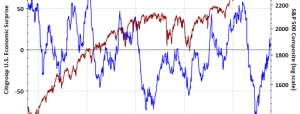by LPL Financial
Key Takeaways
Global GDP Tracker
The top 25 global economies make up 90% of global gross domestic product (GDP). Through Friday, February 13, 2015, 13 of these economies (including countries and political unions) have already reported Q4 2014 GDP results, including the four largest economies (U.S., Eurozone, China, and India). As this commentary was being prepared for publication, Japan, the world’s fifth-largest economy, released Q4 GDP results. Between now and the end of February 2015, Thailand, Mexico, and South Africa will report Q4 2014 GDP; and in the first half of March 2015, reports are due out from Canada, Australia, Switzerland, and Sweden. In late March and early April 2015, key emerging market economies, Brazil and Russia, will report Q4 2014 GDP results.
Our infographic and the following table, arranged in order of Q4 2014 GDP report date, indicate:
Unless otherwise indicated, the actual GDP readings and forecasts in the graphic are year-over-year readings.
In the table following the infographic, we’ve also included a comment on the economy as it relates to oil, indicating, where pertinent, whether the country is a net importer or exporter of oil, how the oil price decline is likely to impact the economy in 2015, and for the larger economies (the top 10 or so), a general comment on how the GDP outlook is shaping up for 2015. We derive these comments from the January 26, 2015, Weekly Economic Commentary, “Gauging Global Growth: An Update for 2015 and 2016.” As we noted in that commentary, the market continues to expect that global GDP growth will accelerate in both 2015 and 2016, aided by lower oil prices and stimulus from two of the three leading central banks in the world; but, in a twist on recent history, the consensus has been raising its estimate for growth in 2015 for developed economies and sharply lowering its estimate for emerging markets. We also noted that even though other factors are in play (inflation, war, sanctions, weather, fiscal and monetary policy, longer-term secular trends like demographics, etc.), the drop in oil and other commodity prices over the past year or so has played a key part in the progression of GDP forecasts across the globe.







